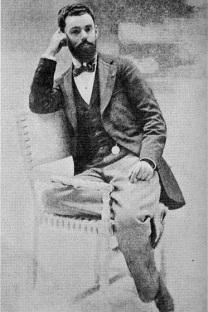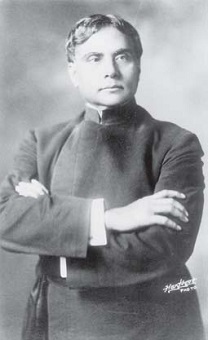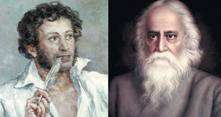The mystery of a 19th century Russian traveller to the Himalayas
 |
| Nicolas Notovitch. Source: wikipedia.org |
In the late 19th century, Nicolas Notovitch, a Russian traveller who was born in Crimea, travelled to India through Afghanistan. He was best known for writing Life of Saint Issa, Best of the Sons of Men,a book that claims that Jesus Christ spent 17 years in India and Tibet.
I managed to stumble upon the original French version of the book titled Vie inconnue de Jésus-Christ. It made for fascinating reading and claimed that Christ learned Sanskrit and the Vedas, as well as Pali and the Buddhist Canon, before returning to the Middle East at the age of 30. Notovitch said he got all this information from the Hemis Monastery near Leh in Ladakh. According to his story, on a journey from Kashmir to Ladakh, the Russian adventurer broke his leg and was treated by monks at Hemis. According to Notovitch, the Head Lama at the monastery read from some documents that mentioned that Jesus was in India and Tibet. This was translated to the Russian and he wrote the book in French in 1894.
Given that this was the 19th century, when the West was staunchly Christian, it is hardly surprising that this book was immediately labelled a hoax by English scholars. Even Max Müller attacked the book and the Russian writer. “Taking it for granted that M. Notovitch is a gentleman and not a liar, we cannot help thinking that the Buddhist monks of Ladakh and Tibet must be wags, who enjoy mystifying inquisitive travellers, and that M. Notovitch fell far too easy a victim to their jokes,” Müller said at that time.
Churches preached at that time that no one had the right to question where Jesus Christ was between the age of 12 and 30. It was conventionally accepted that people weren’t supposed to add to the Bible. The racial supremacist views of that time present across Europe could hardly be compatible with a Russian account of how the Christian teachings were influenced by the Hindus and Buddhists.
There was a huge campaign by the British to discredit the Russian. This campaign was led by James Archibald Douglas a professor of English and History at Government College, Agra. The professor was no doubt motivated by missionary zeal both for western-style Christianity as well for the Crown. Douglas apparently visited the Hemis Monastery and talked to the Head Lama, who denied the existence of documents about Christ being in Tibet and India.
Some publications from the time even claim that the Russian admitted to inventing that story. For those of us living in the age of Google and the Internet, it may be easy to accept the British claims and discredit Notovitch. However I would recommend that someone read this pre-information age book before passing judgement. In India, we are well aware that the British deliberately and maliciously subverted history as a part of their Divide and Rule strategy and to keep the Indians mentally colonised. It’s always been Russia and Russians who have been at the forefront of setting the record straight when it comes to Indian history.
In addition to the Westerners who discredited the Russian, there was an eminent Indian who initially believed the story to be a hoax. Swami Abhedananda, a direct disciple of the Swami Vivekananda, visited the Hemis Monastery in 1922. He had heard about the book in New York and was eager to discredit it personally. Much to his surprise, the Swami was told that there was indeed a Russian who was brought to the monastery with a broken leg. They told him that Notovitch was in the monastery for a month and a half and confirmed his story. The Indian religious leader also saw the manuscript and translated many of the verses into a book he penned on his travels, titled Swami Abhedananda's Journey into Kashmir & Tibet.
 |
| Swami Abhedananda. Source: wikipedia.org |
In 1925, Nicholas Roerich visited the Hemis Monastery, when he was on his Altai-Himalaya expedition. According to Alexandre Andreyev’s The Myth of the Masters Revived: The Occult Lives of Nikolai and Elena Roerich, in the original Russian version of the travelogue, Nicholas Roerich was outspoken about the authenticity of Notovitch’s story and the existence of Tibetan manuscripts. “We have learnt about the authenticity of the manuscript,” Roerich is quoted as writing in Russian by Andreyev. “In Hemis indeed lies an old Tibetan translation from the manuscript, written in Pali and preserved in a well-known monastery near Lhasa. Tales about forgery are exploded.” Roerich was told about the legends of Issa passed down orally. These stories were known in the region, long before the arrival of Christian missionaries.
Not much is known of Notovitch’s life after his controversial book was published, but it looks more than likely that he was an early victim of a Western slander campaign.
All rights reserved by Rossiyskaya Gazeta.
Subscribe
to our newsletter!
Get the week's best stories straight to your inbox
